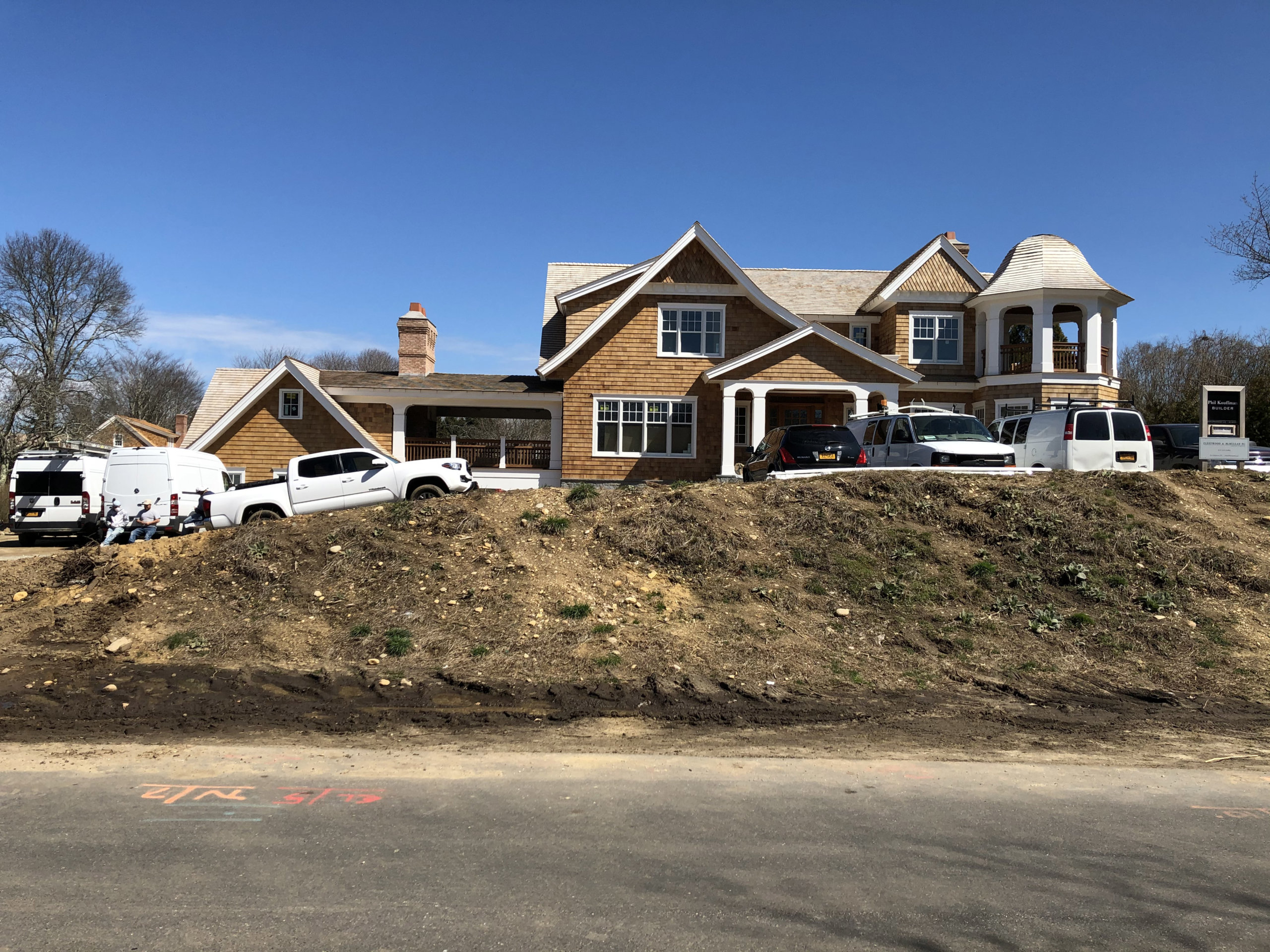East End Construction Sites Ordered Closed


While many businesses across the East End were forced to shut down by executive order from New York State Governor Andrew Cuomo recently in order to stop the spread of the novel coronavirus, construction was not. Crowded sites where new homes were being built were a common sight.
Under the new directive, most residential and commercial building across the state was banned on Friday, March 27, when the governor added construction to the list of non-essential businesses that must shut down.
The new protocol, which was circulated to local officials by state Assemblyman Fred Thiele, requires that “all non-essential construction must shut down except emergency construction.” Emergency construction is defined as a project in progress “to protect health and safety of the occupants (of a residence), or to continue a project if it would be unsafe to allow it to remain undone until it is safe to shut the site.”
“Essential construction may continue and includes roads, bridges, transit facilities, utilities, hospitals or health care facilities, affordable housing, and homeless shelters,” the order reads. Even in those cases, workers must maintain social distancing.
Contractors and homeowners cited for violating the new rule face up to $10,000 per violation.
This decision was made after many residents of both Southampton and East Hampton towns lodged repeated complaints to their respective supervisors, Jay Schneiderman and Peter Van Scoyoc.
The day before the governor’s action, Van Scoyoc penned a letter to him, asking for immediate action. Van Scoyoc wrote, “Many of our residents in East Hampton are extremely alarmed to see ‘business as usual’ taking place at construction sites throughout the town. I have received numerous requests imploring me to do something to stop this activity and protect our small community from unacceptable and unnecessarily rapid spread of coronavirus.”
Van Scoyoc continued, “We have a large number of workers, traveling together in work trucks and vans, coming into East Hampton each day from other towns. On job sites, they are working in groups, side by side, in close proximity without protective gear.”
Schneiderman said on Friday that he supports whatever measures are needed to protect the health and welfare of residents across the state. He said that the tradeoff was simple: “short term suffering for long term prosperity.”
Still, work continued at some sites Friday after the ban was enacted. On one such site in East Hampton Village, there were at least seven work vehicles parked on the property.



